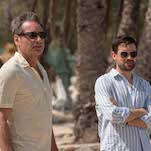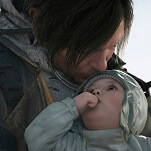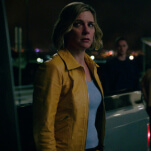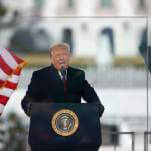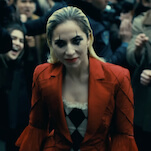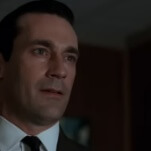As it turns out, any impression of deliberation was a bit of an assumption on my part, but not entirely wrong. While Roberts did not intentionally aspire or to seek to mimic Byzantine art, there were nonetheless some sources of inspiration that had a natural overlap. He told me by email, “I wasn’t specifically representing Byzantine architecture, but I’ve traveled to Istanbul and the Hagia Sophia as well as other structures did make a lasting impression on me. I used many images as reference material, including Byzantine religious icons. I wanted to suggest a world with a history parallel to but different than ours. The flat graphic style of those old images makes them paradoxically more tempting to explore as 3D spaces. They can be very ornate and yet still represent a kind of innocence, qualities that signify piety and fit with the themes of the game.”
In terms of how the game developed, Roberts says that the concept preceded the artistic style. However, it’s also just “how [he] draws,” and that he’s never been able to alter his style much. “Very early on I tried rendering the art using a 3D engine,” he says. “But even then, I tried to coax a hand-drawn look out of that 3D renderer. I always wanted that illustrated style because a drawing come to life feels more magical than a photorealistic image. Also the hand-drawn style allowed me to vary the level of realism within a scene, which made it easier to connect two different scenes together by providing some stylistic wiggle room.”
While over the hundreds of years of the Byzantium Empire its preferred artistic mediums and popular themes shifted many times, spirituality and religion were predictably a constant source of influence and inspiration. This didn’t play into the development of Gorogoa, but Roberts finds the parallel thought-provoking, musing that, “as a somewhat isolated and inward-looking society with layered and elaborate spiritual preoccupations, I suppose [Byzantium]’s history mirrors the themes that play out in the game on a more personal level.”
While I’m surprised that Roberts did not purposefully set out to pursue an aesthetic inspired by Byzantine art, it still shines through in his powerful work. Be the influences on Gorogoa conscious or subconscious, incidental or intentional, the game succeeds in achieving his vision of presenting a world both familiar and strange, and hopefully will spark a growing desire to recreate significant art history periods through videogames in the years to come.
Holly Green is the assistant editor of Paste Games and a reporter and semiprofessional photographer. She is also the author of Fry Scores: An Unofficial Guide To Video Game Grub. You can find her work at Gamasutra, Polygon, Unwinnable, and other videogame news publications.






















